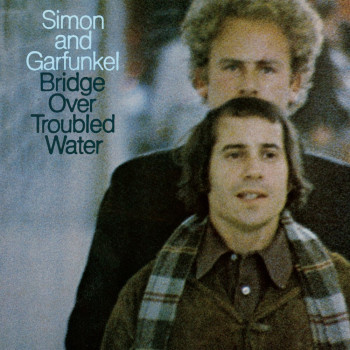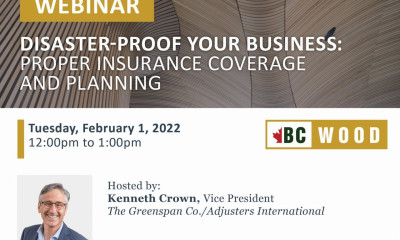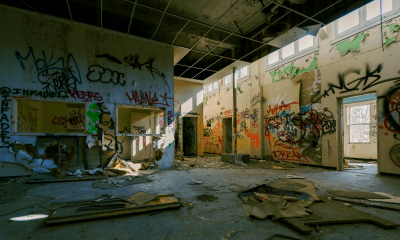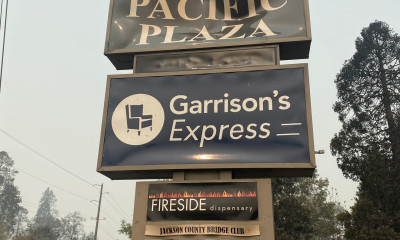A Private Adjuster's Perspective: Bridge Over Troubled Water

It was a balmy, lazy Sunday morning on idyllic Paradise Island in the far South Pacific. The many guests at the Paradise Island Resort, without immediate care or concern, were sitting under beach umbrellas, relishing the warm beach, the light breeze, and the softly lapping waters.
Suddenly, with little warning, the winds began to howl, and the sea began crashing upon the shore. Within an hour, Typhoon Dolly roared onto the land and with it came the total destruction of Paradise Island Resort.
Located on the resort property was the beautiful structure depicted above. It allowed the guests to roam the grounds freely from one building to another, traveling over a gently flowing stream. Replacement cost of this destroyed structure was estimated to be in the hundreds of thousands of dollars.
The owners of the resort — accustomed to South Pacific storms — had the foresight to obtain coverage for typhoons. However, like most commercial policies, theirs also contained numerous items designated as “not covered.”
After sifting through the rubble and preparing a game plan for the filing of insurance claims for the clearly compensable losses, their attention was drawn to a painful question:
Was this rather expensive (walkway?) structure an item of non-covered property under Paradise’s policy of insurance?
The owners of Paradise Island Resort knew, at this point, that they were in over their heads and hired Adjusters International to help prepare and negotiate their property damage and business interruption claims. Based upon over 75 years of representing only insureds, the team at Adjusters International knew that the answer to this question was quite obvious: it depends. On what did it depend? The answer to this question was also quite obvious: it depends on the actual language of the Paradise Island Resort policy.
But aren’t all commercial policies the same? No! Let’s look at a few and observe the differences.
(Examples excerpted from actual commercial policies)
Example 1:
Property Not Covered
-
Covered Property does not include: …bridges, roadways, walks, patios, or other paved surfaces.
Example 2:
Property And Costs Not Covered
-
Unless the following property or costs are added by endorsement to this coverage form, covered property and covered costs and expenses do not include: … bulkheads, pilings, piers, wharves, docks, dikes, dams, canals, sea walls or vehicular bridges ….(emphasis mine).
Example 3:
Property Not Covered
-
We do not cover loss to: … bridges or tunnels, however, pedestrian walkways connecting buildings are covered… (emphasis mine).
Turning back to our question: was the structure covered for the damage?
The answer still remains a resounding: “IT DEPENDS!”
Now, it depends on which policy form was in play and on the Adjusters International team’s arguments for coverage.
Example 1:
At first blush, it would appear that the resort’s carrier might prevail in its quest to deny coverage by arguing that the depicted structure is a bridge and, therefore, not covered property under examples 1 and 2. Presumably, the carrier would look to the following definition of bridge in support of its argument:
Webster’s Ninth New College Dictionary defines a bridge as a structure carrying a pathway or roadway over a depression or obstacle.
Simple: yes? No!
A word or words in written documents — especially in a writing as complicated as an insurance policy — should not and cannot be read in a vacuum. It must be considered in context. Adjusters International personnel, in representing thousands of insureds over three-quarters of a century, know this maxim quite well.
In arguing for coverage, the Adjusters International team would invoke the rules of ejusdem generis and noscitur a sociis.
Noscitur a sociis: a rule of contract construction providing that the meaning of an unclear word or phrase should be determined by the words immediately surrounding it.
Ejusdem generis: a rule of contract construction providing that, when a general word or phrase follows a list of specifics, the general word or phrase will be interpreted to include only the items of the same class as those listed.
How will these canons of construction help the insured, Paradise Island Resort, win its argument for coverage of the structure at issue?
First, the team at Adjusters International would call the carrier adjuster’s attention to the fact that the undefined word “bridge” is ambiguous. There are vehicular bridges and pedestrian bridges. Furthermore, the bridge in example 1 is surrounded by words describing paved structures: roadways, walks, patios and other paved surfaces.
Clearly, the structure in question is neither a roadway, nor is it paved. It is a narrow structure made of wood and iron. It is not a bridge at all, in the common meaning of the word. It fits the Webster’s Dictionary definition of a footpath (a narrow path for pedestrians), pedestrian walkway, or a pedestrian bridge. None of these descriptive items are scheduled as non-covered property. Paradise Island Resort should have a winning argument.
Example 2:
The resort will have a much easier argument here. The carrier in example 2 has specifically stated that vehicular bridges are not covered.
Having taken the time to describe what kind of bridge (vehicular) was not to be covered, by implication, necessity, and just plain-old-common-sense, the carrier surely intended to cover pedestrian bridges such as those dotting the Paradise Island Resort property. Here too, with the help of Adjusters International, the insured is victorious.
Example 3:
This example presents an interesting question and scenario.

Bridge A, as presented above, is not a bridge but is, rather, a pedestrian walkway that clearly connects the two buildings on opposite sides of the water. The language in example 3 provides coverage for pedestrian walkways connecting buildings and payment should be readily forthcoming.

What about Bridge B? Once again, the structure at issue is not a bridge, but rather a pedestrian walkway. But does it connect buildings?
In arguing for coverage, Adjusters International adjusters would first make the point that the word connecting is ambiguous. Connecting has several meanings and synonyms including, but not limited to join or fasten together usually by something intervening, as a highway connects two towns: bringing together, pairing, coupling.
Nowhere is it to be found that the structure connecting two items must be in physical contact with both (such as Bridge A).
In the case of such ambiguity of language, the universal rule is that the benefit of the doubt goes to the insured, ambiguities are to be construed against the drafter (carrier), coverage is to be provided whenever possible; etc. This clearly mandates that the loss of and damage to Bridge B also be compensable.
Conclusions:
Several conclusions can be drawn from this discussion:
- The actual policy language is of utmost importance;
- Likewise, the actual facts and circumstances of the loss are of critical importance;
- The nature of the insured business and its extensive property interests must be matched to the most appropriate policy forms;
- READ THE POLICY both before (i.e., upon receipt) and after an actual loss.
Simon and Garfunkel's 1970 release "Bridge Over Troubled Water" has been covered by everyone from Aretha Franklin to Willie Nelson. The composition, which was inspired by a gospel song, became one of Simon and Garfunkel's biggest hits. An ode to navigating difficult times, the song seems particularly relevant to the case study we chose to highlight in this quarter's newsletter. Listen here, as you read the story.











